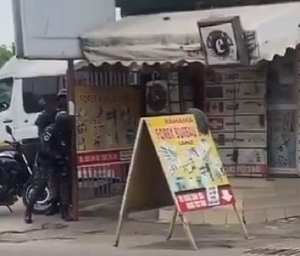The Volta River Authority (VRA) says its new power tariff covers only around 60 percent of its costs, and it will have to rely on support from government to bridge the gap.
Kweku Andoh Awortwi, VRA's chief executive, says the Public Utilities Regulatory Commission (PURC) approved a 36 percent increase in the Authority's tariff, against its request for a hike of 128 percent.
The PURC said it watered down the utilities' tariff after listening to concerns of stakeholders over the impact of a substantial hike. But by reducing the magnitude of the tariff increases, the PURC has left the utilities without sufficient revenues to recover their costs and narrow a wide investment gap in the sector.
The VRA needs to invest US$200million annually in fresh generation to meet electricity demand, which is rising at around 10 percent every year. “We just didn't think the first step after three years would be a 36 percent increase in VRA's tariff with the currency depreciation experienced within the last three years, we are just going back to what we used to have in 2011. That is particularly relevant to VRA as we buy crude oil in dollars,” Mr. Awortwi said.
“In our representations to the PURC, we showed that even the cost of crude oil should get our tariffs to 15 pesewas per kilowatt hour (KWh). This doesn't include maintenance and overhead costs. The Authority's year-to-date average cost of production, including maintenance and overhead costs, is about 19.5 pesewas. With the increase in tariff of 36 percent, we come up to about 11.5pesewas, which is very inadequate.”
With tariffs frozen since the last quarter of 2011, higher fuel costs and problems with natural gas supply from Nigeria led to a chain of losses at the VRA and other utilities.
The companies in turn relied on heavy subsidies from government to keep their operations running; but the subsidies were not always received promptly, and by the end of 2012 government owed VRA, ECG and the Northern Electricity Distribution Company (NEDCo) a total amount of GHC421million, according to a finance ministry report.
The increase in the tariffs will curb government's debt to the power companies and help bring down the budget deficit of 11.8 percent of GDP, Finance Minister Seth Terkper told the B&FT in August.
Mr. Awortwi also asked the Public Utilities Regulatory Commission (PURC) to make good on its promise to re-institute the automatic tariff adjustment formula - a mechanism for periodic, marginal adjustment of utility tariffs to set them in line with movements in production costs - - to avoid any future one-time huge increases.
End-user electricity tariffs have increased as much as 78.9 percent from October. The rates for water have also surged by 52 percent, incurring the ire of the Trades Union Congress (TUC), the Association of Ghana Industries (AGI) and the Ghana Employers' Association (GEA).
“We are sympathetic with the general public about these very dramatic price rises. We also don't think that they are good for the country; they are difficult to absorb,” said Mr. Awortwi. “That is why for years we have been calling on the PURC to bring the automatic tariff adjustment to let tariff increases come gradually. We don't know why doing it is a difficulty, but it would have cushioned us against many of these things we are facing today,” he added.
The VRA chief executive also said public dissatisfaction with the present situation means “we are not really solving the problems that we set out to solve with subsidies”, adding: “I don't think anybody expected the subsidies to be removed immediately, and 78.9 percent is high for everybody”.
There seems to be broad support for the automatic tariff adjustment formula, with industry leaders telling the B&FT it will help them manage their costs better.
Business News of Wednesday, 9 October 2013
Source: B&FT

















